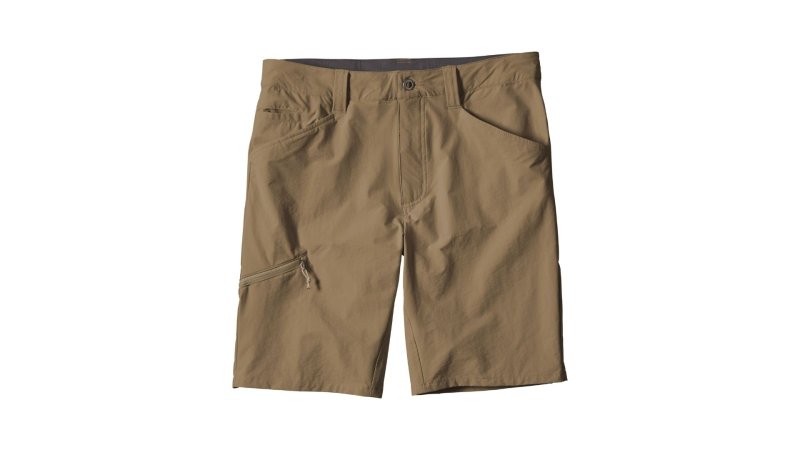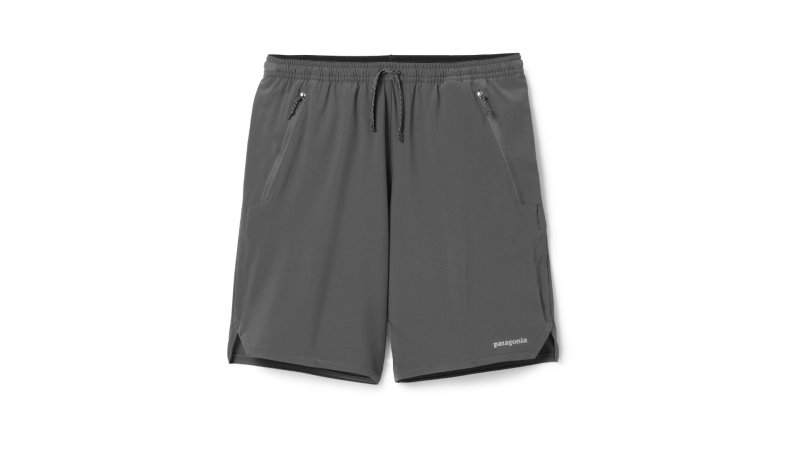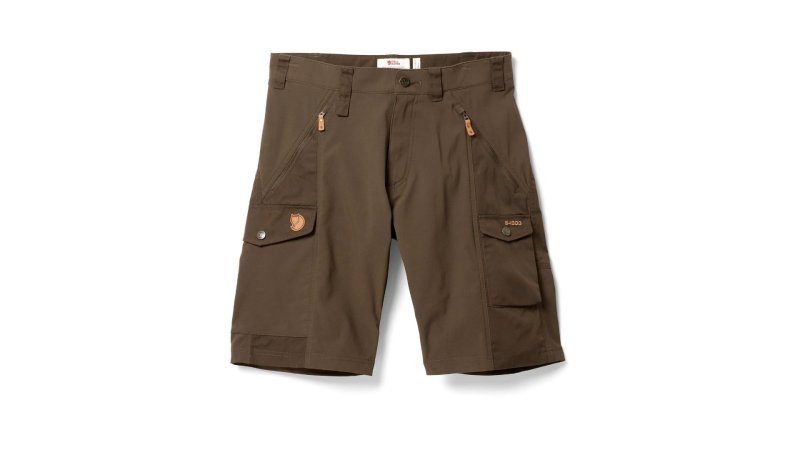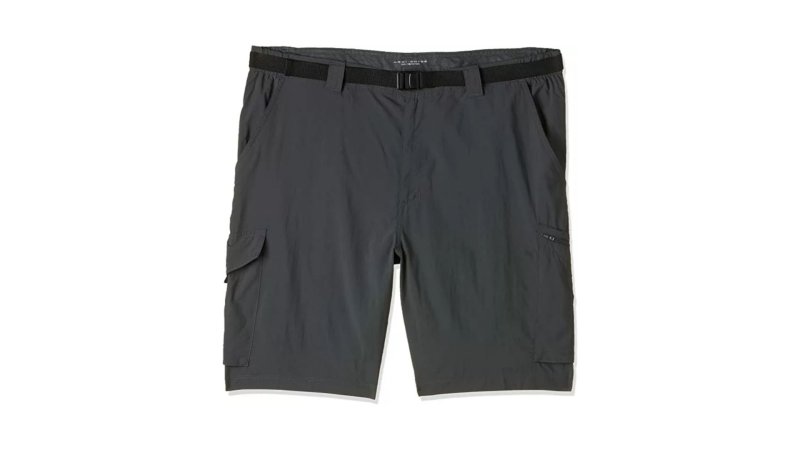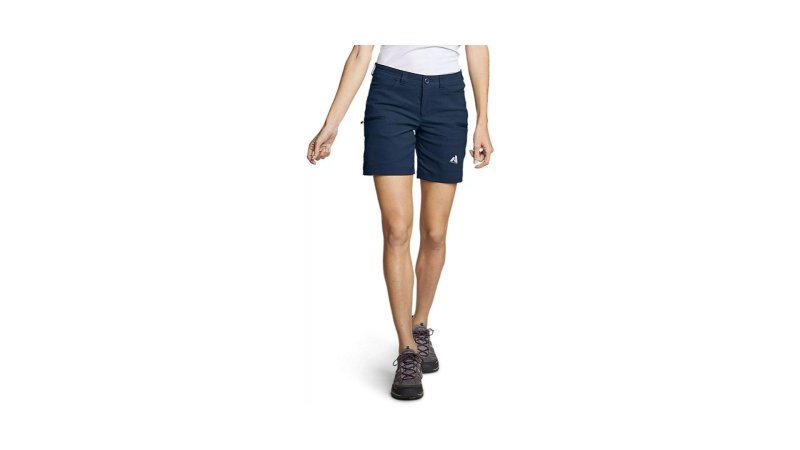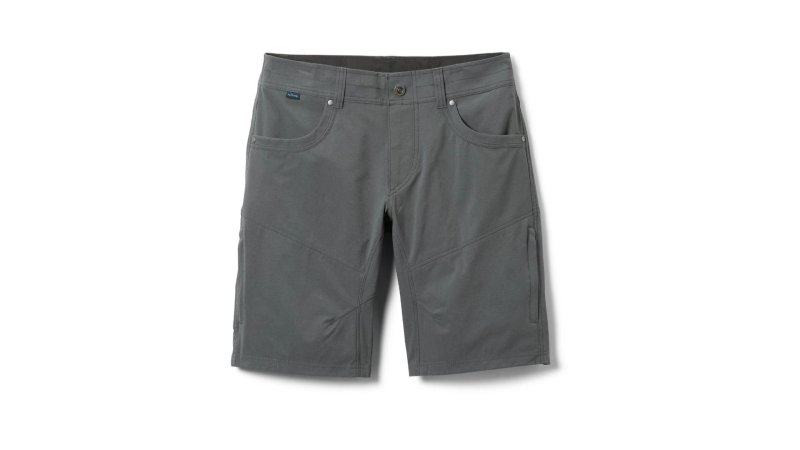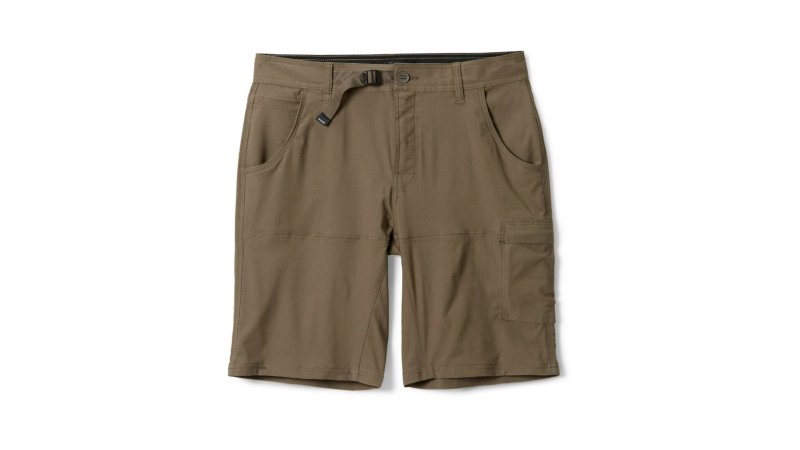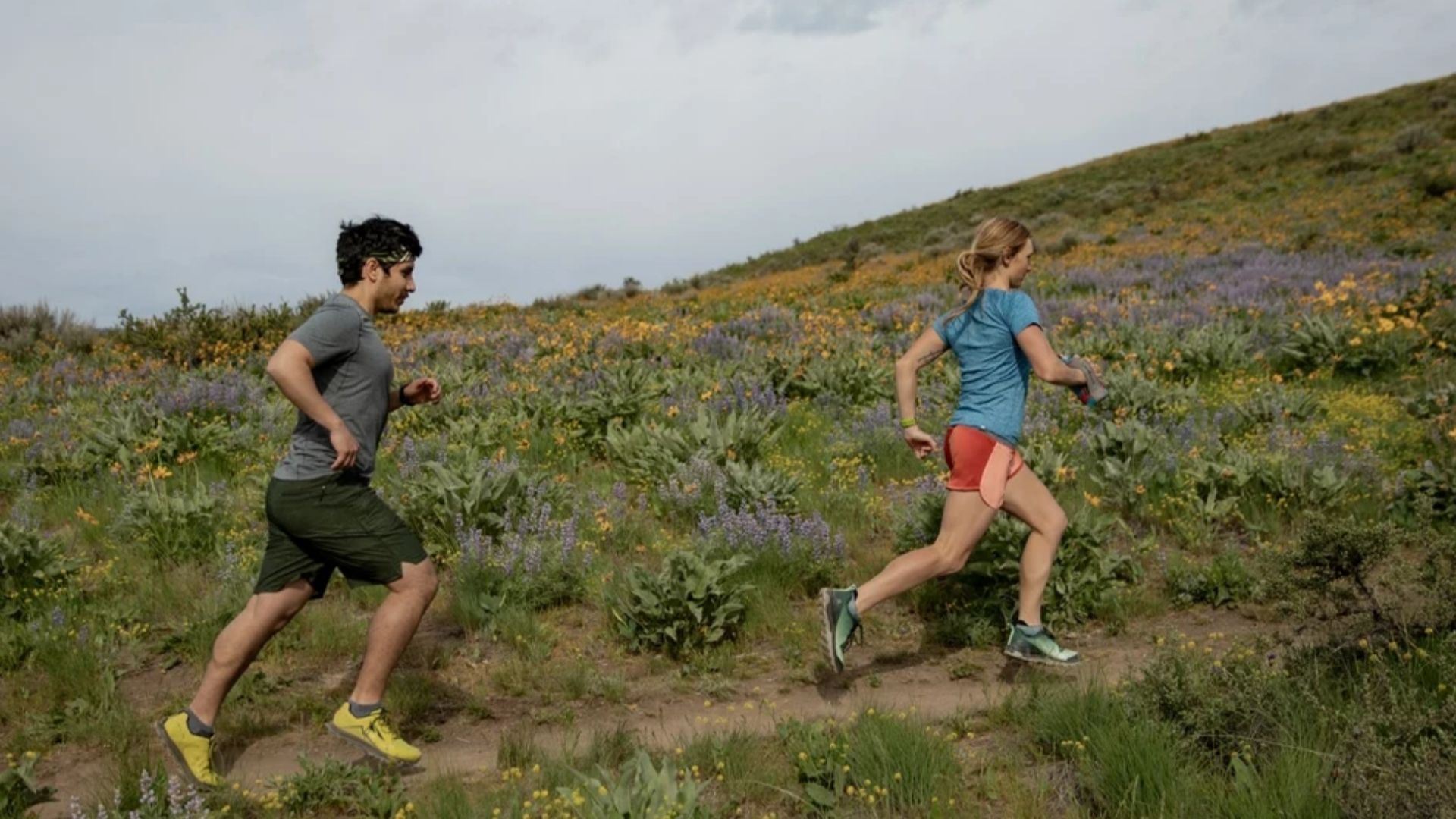

We may earn revenue from the products available on this page and participate in affiliate programs.
Whether you’re new to hiking or a seasoned trekker, it’s vital to wear the proper clothing so you don’t get chafed or soaking wet from sweat. In addition to the right footwear, socks, pants, and shirts, you may want to invest in a comfortable yet functional pair of hiking shorts. While they provide less coverage than pants, they’re a good option if you plan on spending the day in hot and humid conditions.
Unfortunately, not all hiking shorts are created equal. Some are more durable than others. They also differ in their material construction, UPF protection, moisture-wicking capability, and overall functionality, particularly when it comes to pockets. We did the research so you don’t have to. Check out the best hiking shorts available online and in stores.
Best Overall
Patagonia Men’s Quandary Shorts
Pros
- Quick-drying
- Comfortable
- Lightweight
- Six pockets
Cons
- Only one hip pocket
- Pockets could be a little deeper
- Drawstring can get caught in zipper
Why We Picked It
- This is a great pair of lightweight, quick-drying shorts that have just enough stretch to provide a comfortable environment for hiking.
Product Specs
- Inseam: 10 or 12 inches
- Materials: Nylon and spandex
- UPF protection: Yes
Best Value
Patagonia Nine Trails Shorts
Pros
- Comfortable and breathable
- Lightweight and packable
- Quick-drying
- Three zippered pockets
Cons
- Inner liner may tear over time
- May wear out more quickly compared to some rival options
- No UPF protection
Why We Picked It
- One of the features we really like about these shorts is the three zippered pockets, which work great for items such as cell phones and keys.
Product Specs
- Inseam: 8 inches
- Materials: Polyester and spandex
- UPF protection: No
Editor’s Choice
Fjallraven Abisko Shorts
Pros
- Flexible and durable
- Gusseted crotch for freedom of movement
- Deep hand pockets
- Comfortable
Cons
- Fabric on the back waistline may start to pill prematurely
- Heavier than some other options
- May be too long for some users
Why We Picked It
- We like the higher waistline in the back of these shorts, which helps when you’re wearing a pack on the trail.
Product Specs
- Inseam: 10 inches
- Materials: G-1000 original fabric (polyester and cotton)
- UPF protection: No
Best Lightweight Hiking Shorts
Columbia Men's Silver Ridge Cargo Short
Pros
- Constructed of tear-resistant nylon ripstop
- Lightweight and comfortable
- Gusseted crotch
- Sun protection
Cons
- Only even sizes available
- May be a little tight on big thighs
- Items can tear the mesh pockets
Why We Picked It
- Mesh pocket bags make these shorts nice and breathable. They’re also lightweight and dry quickly.
Product Specs
- Inseam: 10 or 12 inches
- Materials: Nylon and polyester
- UPF protection: Yes
Best Hiking Shorts for Women
Eddie Bauer Women's Guide Pro Shorts
Pros
- Comfortable
- Flattering, curvy fit
- Moisture-wicking and water-repellent
- Functional pockets
Cons
- May show panty lines
- Zippered pockets are too small for some cell phones
Why We Picked It
- Eddie Bauer’s Guide Pro Shorts are comfortable, lightweight, stretchy, and provide good mobility when you’re on the trail and climbing boulders.
Product Specs
- Inseam: 7-inch regular, 6.5-inch petite, 7.5-inch tall, and 7-inch plus
- Materials: Nylon and spandex
- UPF protection: Yes
Best Cargo Hiking Shorts
KUHL Silencr Kargo Shorts
Pros
- Quick-drying
- Comfortable
- Lightweight and stretchy
- 7 pockets
Cons
- Button may easily come undone
- Sizing may be slightly off
Why We Picked It
- They’re less baggy than traditional cargo shorts yet are still flexible, stretchy, and a good option for hot, humid hikes.
Product Specs
- Inseam: 10.5 inches
- Materials: Polyester
- UPF protection: Yes
Best Urban Hiking Shorts for Men
prAna Stretch Zion Shorts II
Pros
- Good mobility
- Great pockets
- Durable
- Moisture-wicking
Cons
- Waistband doesn’t stretch
Why We Picked It
- These shorts are available in a wide range of colors and look as good as they feel.
Product Specs
- Inseam: 10 inches
- Materials: Nylon and elastane
- UPF protection: Yes
Why you should trust us
I spent my childhood near the Adirondacks Mountains in upstate New York, so outdoor activities are in my blood. One of the hardest decisions I have to make on a beautiful sunny day is whether to hike a local trail, take a walk on the beach, or ride my Indian Scout. I understand the importance of comfortable and functional clothing when exploring the woods, spending the day on the open road, or completing a HIIT/strength training workout (which I do six days a week).
As a seasoned buying guide writer, I spend a lot of time researching products and reading user reviews to supplement the experience I have with fitness equipment, motorcycle accessories, and outdoor gear. That way, I can provide the best, most informed information for readers like you.
Key features of hiking shorts
Material
This is one of the most important factors to consider when choosing a pair of hiking shorts. This article of clothing can be made of several types of materials, including cotton, nylon, polyester, and microfiber. While cotton is comfortable and breathable, it’s not ideal for warmer days because it’s not moisture-wicking, and the last thing you want is to sweat a lot and spend your day in damp shorts. Items with a cotton blend are a better option and tend to be more breathable, so look for products that combine cotton with polyester, nylon, or other materials because they are more likely to keep you dry.
Comfort
When you’re on the trail, you want to be as comfortable as possible. Ideally, you want shorts that provide freedom of movement and don’t bunch up and cause discomfort and chafing. The level of comfort is based on the material of the shorts as well as the size and cut of the shorts. Hiking shorts come in different lengths, depending on where you like the cuff to rest on your thighs. Make sure they aren’t too tight or too loose, or you will either be sucking your stomach in or cranking down your belt to keep them on. They should also not absorb your sweat and make you feel damp.
Ventilation
Ventilation is important in hiking shorts because it allows heat to leave the body. In addition, the more ventilated the shorts are, the easier it will be for sweat to evaporate. In shorts, this is often achieved through mesh-lined pockets. When it comes to breathability, it’s often related to the material’s weight and density.
Stretch
Some brands of hiking shorts have more stretch than others. They allow you to comfortably walk on rugged or hilly terrain without making your legs feel constricted. If you embark on more rigorous trails with high terrain, you want comfortable hiking shorts that permit a good range of movement when you climb over boulders or navigate steep hills. Hiking shorts with some percentage of spandex are a good option because the material is breathable and allows you to comfortably hike a variety of trails without the material bunching up and preventing your legs from freely moving without feeling constricted.
Pockets
If you don’t carry a backpack or want quick access to items such as a cell phone, pockets are fairly important when it comes to hiking shorts. You want pockets that are deep enough and wide enough to hold your belongings. Avoid clothing that has short and narrow pockets because they won’t be able to hold a lot of gear or hold it comfortably. The position of the pockets is also important. It can be uncomfortable to carry heavier items such as a wallet or cellphone in some pockets if they impede movement due to their location.
Adjustable waistband
Shorts and pants typically include button or drawstring closures. Button closures with zippers are generally less comfortable because they’re not adjustable. If you choose shorts with a button, you must choose a pair that fits you just right because you won’t be able to loosen them up. Of course, you can always choose a pair that’s slightly loose and add a belt, but then you must make sure the belt is comfortable and not too tight. A drawstring, on the other hand, lets you adjust the waistband based on your body’s size and shape.
UPF protection
The best way to ward off skin cancer besides staying out of the sun is by slathering on sunscreen and/or wearing clothing with sunscreen protection. The good news is that many brands of hiking shorts include UPF protection that prevents damaging ultraviolet rays from harming your skin. It doesn’t matter if you are an occasional hiker or an avid one, it’s a good idea to make sure your skin is covered properly. According to the Skin Cancer Foundation, fabric with UPF 50 protection blocks 98 percent of the sun’s rays. Darker colors repel damaging rays better than lighter ones. Densely woven fabric is also more protective as is looser-fitting material.
Weather resistance
Some shorts are better at repelling water than others. They are designed with fabric that’s meant to offer a particular degree of water resistance, depending on how much precipitation you encounter. The thickness and weight of the fabric play a role. Also, check to see if the shorts are fast-drying. Some shorts will stay wet for longer periods of time due to their construction and materials.
Benefits of hiking shorts
Hiking shorts have certain characteristics that make them better designed for the woods compared to other types of shorts. There are many reasons why hiking shorts are better than, say, gym shorts, if you’re planning on hitting the trail. This includes their comfort level, durability, sun protection, and versatility.
Comfort
The right clothing can make a huge difference when it comes to your comfort level while hiking. The wrong boots, the wrong types of layers, and the wrong shorts can turn a potentially invigorating adventure into a miserable one. While hiking-specific shorts may be more expensive than alternatives, such as cargo shorts, the price you pay will be worth it. The best hiking shorts will fit properly, have features such as sun protection and multiple pockets, and will be breathable and moisture-wicking so your sweat doesn’t make them too damp. They will also provide freedom of movement as you navigate the trail.
Prevent chafing
Friction, moisture, and the wrong fabric can cause chafing. Since you move your legs a lot when you’re hiking, and you can also sweat, chafing can occur, particularly if you’re wearing the wrong hiking shorts. Your skin, particularly in the thigh and groin areas, can start to burn and feel very uncomfortable. It can also turn into a rash and even swell or bleed if it’s not attended to properly. The best hiking shorts are designed to minimize and even prevent chafing.
Durability
Basic men’s and women’s shorts are designed for different activities. They won’t necessarily stand up to the rigors of the trail. The best hiking shorts are constructed of durable materials that are able to withstand the dirt and grime you may encounter on your outdoor adventure. They are typically made of stronger materials, so they’re less likely to snag on a tree branch, for example. Some brands are even water-resistant, so you’ll be a little more comfortable if it’s wet outside or you come across some light rain. Hiking shorts are more robust to handle the elements compared to many other types of shorts.
Stay cool
While many hikers prefer pants because they provide more coverage than shorts, sometimes it’s simply too hot to wear them. When it’s extremely hot outside, hiking shorts provide much more air flow and keep your legs and other areas drier than pants. You can wear them throughout the day, but they are particularly comfortable when the sun is at its peak and beating down at you through the trees.
Lightweight
If you’re an ultralight hiker, you want to do whatever you can to keep the weight off. Hiking shorts will naturally weigh less than comparable hiking pants because they consist of less material. If you like to pack light and hike light, shorts are a great way to lessen the load.
Versatility
One of the best things about hiking shorts is that you don’t have to relegate them to the trail. You can wear them for other activities as well. Most hiking shorts are designed so you can wear them to your child’s soccer game, for a grocery run, or on a day out with friends. They are versatile enough to dress up or dress down, depending on the occasion.
Pricing considerations for hiking shorts
Budget
It’s possible to find hiking shorts for under $50, but you may have to do some research to find a good pair. These shorts should provide adequate coverage and protection for a warm-weather day hike, but they may not include features such as UPF protection. They may also not be as durable as some higher-end options. Some may also be considered all-around shorts instead of shorts designed specifically for the trail.
Mid-range
The majority of hiking shorts fall within the $50 to $75 range. You don’t have to pay a lot of money to get a reliable pair of shorts that are moisture-wicking, quick-drying, and comfortable to wear on a day hike or a multiple-day adventure. You can easily find shorts designed specifically for hiking, so they include features like multiple pockets and UPF protection.
Premium
Options such as the Fjallraven Abisko Shorts cost upwards of $100 or more. You don’t necessarily get better performance by paying a little extra. Fjallraven is a Swedish company known for its high-end outdoor gear, so you’re paying for the brand name. Plus, the company produces high-quality clothing and gear, which costs a premium. However, hiking shorts from brands like this aren’t going to make you a more efficient hiker compared to someone who wears slightly less expensive clothing. Mid-range and premium shorts typically share similar features.
How we chose our top picks
Since comfort, function, and moisture-wicking are critical when choosing a pair of hiking shorts, we started there. But we also considered several other features, such as UPF protection, water repellency, and overall durability. Fit is vital when choosing clothing for hiking, trekking, and backpacking adventures, so we made sure to choose products that aren’t too snug or too loose and provide good freedom of movement, whether you’re walking on flat terrain or climbing boulders. Since we couldn’t get our hands on these hiking shorts for a full-on review, we looked at what others had to say about them. We examined trends and found the hiking shorts in this list rose to the top due to their various features.
FAQs about hiking shots
You’ve got questions, Task & Purpose has answers.
Q: What should you not wear while hiking?
A: Avoid tight pants, leggings, or other pants or shorts that stick to your skin. Jeans and thick fabric is also a bad idea, as is clothing that is 100 percent cotton or silk.
Q: Is it better to hike in pants or shorts?
A: Shorts are fine if you’re planning a day hike in warm weather on a trail that’s rated easy to moderately difficult. However, shorts provide less protection on rugged trails, in inclement weather, and on longer hikes in which the conditions are more challenging or less predictable.
Q: Why do thru-hikers wear shorts?
A: Some hikers prefer to wear shorts because they are cooler and provide more mobility than pants.
Q: How do you keep ticks off when hiking?
A: One way to avoid ticks is to wear insect repellent. You can also spray your clothing and gear with the insecticide permethrin. If you wear light-colored clothing, ticks will also be easier to spot so you can remove them.
